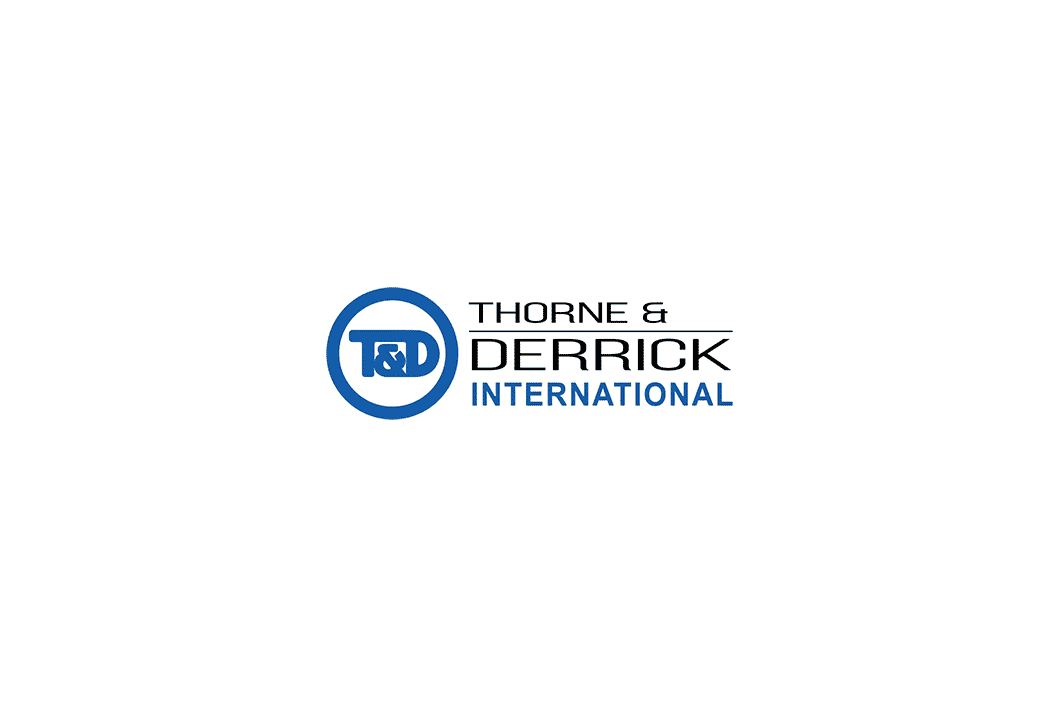Change begets change. For the process industries, this can be a problem.
We are in the midst of war in Europe, recovering from a global pandemic, facing the effects of increased globalisation and industry-related contraction and witnessing irreversible planetary damage from climate change. So, how does change, with an emphasis on climate and geopolitics, have practical implications for process industries?
The effects of these incidents will inevitably become commonplace, but with change occurring at an unprecedented scale, this conversation should be brought to the forefront. An incident, that is directly related to geopolitical change recently occurred for one of our clients. This particular client was forced into a procurement pivot as they faced supply chain issues. An alternative supplier was able to provide the same compound, but there was a slight difference in the particle size of the raw product. The flammable property of this newly acquired material changed in just a slight way, but just slight enough to create a minor incident.
This blog will discuss a range of climate and geopolitical challenges and emphasise the need for the formulation and continuity of a ‘basis of safety’ alongside mitigation of risk related to operations. It will also examine how risk assessments are completed, how to analyse these situations and estimate how significant their consequences may be.
Contemporary Change Examples and Challenges
Climate Change
Weather records are being broken far more frequently. We periodically see higher temperatures and heavier rainfall which are continually setting new records. What used to be a 1-in-100 year event has now become a 1-in-10 year event. As the severity of extreme weather is projected to increase with global warming, there will be a direct impact on global industries.
Water Supply
In the UK, the water sector has a legal requirement to have resilience plans in place. But, the potential impact on the availability of water and its effect on on-site operations during times of extreme temperatures and drought, must be factored into future risk assessments.
Chemical and Energy
As the chemical and energy sectors are more vulnerable than others, comprehensive risk assessments must be guided by up-to-date climate change data. As forecasting becomes more accurate and is informed by more relevant data, climate models and predictions rapidly change.
The major challenge, therefore, arises from prioritising effort. All consequences must be evaluated and a plan to mitigate any outcomes must be put in place. This is especially true if high quantities of hazardous materials could lead to a breach of containment make-up operations.
Global Locations
If your industry or enterprise is global, then by this virtue there will be a wider range of risks. This can, in many cases, be attributed to vulnerabilities of site location. An example is a disruption to international and/or domestic supply chains.
Geopolitical Change
Climate change is one thing, but we are going through multiple evolving geopolitical situations elsewhere in the world. The COVID-19 pandemic showed severe gaps in our supply chain resilience and recent events in Europe have, and will continue to create unpredictable global ramifications.
The complications for risk assessments are largely the same as those that can be attributed to climate change. In essence, businesses must seek to understand and evaluate vulnerabilities and understand what preventative mitigation measures can be established.
The difference that geopolitical change brings, however, is speed. This tends to make an organisation’s response reactive rather than proactive. Another contrast is that geopolitical change can be reversed almost as quickly as they start, so flexibility is required.
Whether it’s the supply chain, energy infrastructure or transportation, rapid knock-on effects are far more likely to occur. There must be a balance between short and long-term strategies. If a situation is going in one direction, you may be in a position to pivot and exploit. Although, the key is to evaluate how competitors respond to change. An example would be how governments implement sanctions and embargoes on countries and how this has an effect on trade.
Ukraine and Kazakhstan
Geopolitical change in Ukraine and Kazakhstan has created supply chain disruption, in particular; Uranium, corn, wheat, metals, natural gas and oil.
On the 27th of April 2022, Russia stopped supplying natural gas to Poland and Bulgaria and extended the stoppage of fertiliser exports. This is on top of China’s decision to ban the export of Potash, a key ingredient in the fertiliser chain.
This has had significant consequences for the global energy and agriculture industries. Raw materials can and will be gathered from elsewhere, but this change requires evaluation. Given the complexity of the globalised market, knock-on effects can and will affect organisations that considered themselves immune. This could be suppliers, customers or a third-party transportation company that pass the knock-on effects.
China
Three-quarters of the world’s manufacturing supply chain steps around China and Taiwan, so ocean transport would be severely affected if there would be a form of maritime war or embargo in that area.
Guidance ISO 14091
Guidance on climate change preparation is available via ISO 14091. This standard provides guidelines on vulnerability, impacts of climate change and authority on how to develop and implement sound risk assessments for climate change.
The overall scope of this document is to provide a list of broad objectives;
- The first is the avoidance of major accidents during operations. This is where the basis of safety is important.
- The second scope aims to maintain business continuity in the face of risks.
The IPCC’s Sixth Assessment Report is a regularly published document from the UK government’s climate assessment. This assessment notes major potential climate impacts and provides useful region-specific fact sheets alongside operational scenarios.
Business Management
Business preservation should align with three core values: avoidance of accidents, continuity and productivity. Any plan to be put in place must be correctly resourced; senior management must have a buy-in as they will supply time, money, personnel, and other required resources. This is a commitment that must align with the overall business plan.
Detailed information on business management and continuity will aid in the understanding of enhanced risks while simultaneously highlighting any additional vulnerabilities.
Markets and Finance
Changes to customer supply and demand tie into client difficulties such as insurance or investor requirements, and other third-party interests or neighbours.
Planning
A plan, do, check and act strategy is a useful exercise.
Plan to do something, do it, check that it’s working and then take additional actions depending on outputs. This is particularly useful in the context of rapid change and should be built into change management systems to better manage future risks. Questions to consider during this stage are:
- What information is needed?
- What awareness training and skills would improve resilience mitigation?
- How are risks prioritised?
- Are there any operational changes that may incur urgency?
Could different compounds in your process minimise the potential for an incident, or would physical changes or technological changes aid in the mitigation process?
Changes should be adopted based on two core business values; effectiveness and cost versus benefit. These values should be considered in tandem as the implementation of change, by its nature, creates cost. Ultimately, will one major change have the same value as ten smaller changes?
Making and implementing an effective plan
An effective plan must state what should occur before, during, and after an event. A person of responsibility must be named to monitor and review any plans to accommodate and change processes. As data changes over time, it should ideally align with other improvement plans, i.e. schedule replacement equipment.
Monitoring and review
Introducing a commitment to ongoing continuous improvement through consistent monitoring and reviews, functions as the ‘check’ phase of the plan, ‘do, check and act cycle’. This could cover the monitoring of weather impact and the effectiveness of countermeasures that have been put in place.
The monitoring and review phase should also include regular performance reviews. The plan and any changes should be consistent with data that’s been generated by external agencies and should align with discovery data on the effectiveness of installed safety measures. Any measures and outcomes of plans for dealing with incidents must be consistently updated.
Risk Assessments
Supply Chain Risk Assessments
Supply chains have both internal and external demand risks.
Demand risks are miscalculations of product demands. These are often the result of insights into year-on-year purchasing trends or unexpectedly high demand. Supply risks may occur when core raw materials are disrupted by the flow of products. Environmental risks could be socioeconomic, political, governmental, ‘other uncontrollable environmental’ issues and business risks that directly contribute to unexpected changes.
Internal risks are controllable and can be identified and monitored using internal systems. These may include manufacturing risk, business risk, or poor planning control caused by inaccurate forecasting. Businesses must have contingency plans to absorb the effects of change.
Several tools analyse trends by using predictive and prescriptive analytics via historical data. However, with a situation that involves rapidly evolving change, data may also change quickly so attention is required to ensure models remain accurate.
Risk management strategies for supply chain issues should use the ‘prevention, preparedness, response, and recovery’ framework.
This framework categorises resilience measures in a hierarchy. An example may include stockpiling for prevention, developing emergency contingency plans for preparedness, executing emergency plans for response (testing is essential) and preparing for the resumption of the operational activities (stress testing) for recovery.
Operational Risk Assessments
A risk assessment is a risk assessment, the exercises are undertaken no matter what risk is being assessed and what the potential impacts are. If prompts are used to keep consistency, they should be used with caution. As climate and geopolitical change may occur at unimaginable levels, drawing on past experiences might steer you down the wrong path
For operations, consideration must be taken for the relationship between processes and changes to ambient conditions and higher temperatures.
Other considerations include;
- Whether additional materials on-site could be affected
- Effects on operators
- Whether assets (buildings, plants etc) could be damaged
Ultimately, anything that may be made more dangerous should be noted.
High, medium or low priority is established via the outcome of a risk assessment. The assessment is a combination of the consequence of an event and the likelihood of occurrence. High consequences and a low likelihood of occurrence generate low residual risk. High consequences with a high likelihood would create a high residual risk.
Minimising risk by consequence or lengthening is the main aim, and this is where it’s difficult with climate change. Due to an increase in extreme weather frequency, any estimates used must be updated regularly (the more data, the better the model).
Consequences must consider the impact on safety for the environment, commercial costs, business viability and broad objectives (previously defined as productivity and business continuity). Once there is an indication of where priorities lie, preferred safety measures must be evaluated and then placed in a formal plan for execution.
Management of Change
Management of change can be introduced as a result of a climate or geopolitical change risk assessment. The implications of change and its consequences should be separated from the reason that the change was introduced. Management of change systems must be adequately evaluated and managed with any risks being appropriately mitigated – or else there could be a breach.
Our client, who changed raw material supplier had been provided with the same compound with a particle size difference, unknowingly required a change to their basis of safety. All risk assessments associated with DSEAR were no longer valid because of material deviation. The raw material was correct from a processing point of view, but it wasn’t from their basis of safety.
A rigorous management of change system would have identified that it was necessary to add a mitigation layer. Before specific mitigation is conveniently introduced, a material must be categorised via adequate testing. Test results would inform the assessment, and measures could be identified and could be put in place to bring the process back into a safe state and fulfil company requirements and UK law. All of the above require testing.
As stated in DSEAR, a basis of safety is made up of equipment, procedures, deviations, human factors, material properties, and a suitable level of risk to aim for.
Conclusion
Climate and geopolitical change are rapidly evolving. Organizations will have to implement changes to their operations to mitigate risk and maintain business continuity and productivity.
The changes that are driven by risk assessments should be implemented through a change management system. A change management system must identify what additional mitigations must be put in place to the kind of the basis of safety under which a business operates.
Sigma-HSE are recognised global experts in the process safety industry. We are experts in implementing Management of Change systems, DSEAR and process risk assessments throughout a range of industries. Our consultancy team are on hand to discuss your requirements and will collaborate with you to provide actionable safety solutions that are both cost and time effective.
If you are unsure about the fire and explosion characteristics of newly sourced raw materials, Sigma-HSE’s accredited testing laboratory can undertake all required testing, according to the relevant standards with a quick turnaround service.



